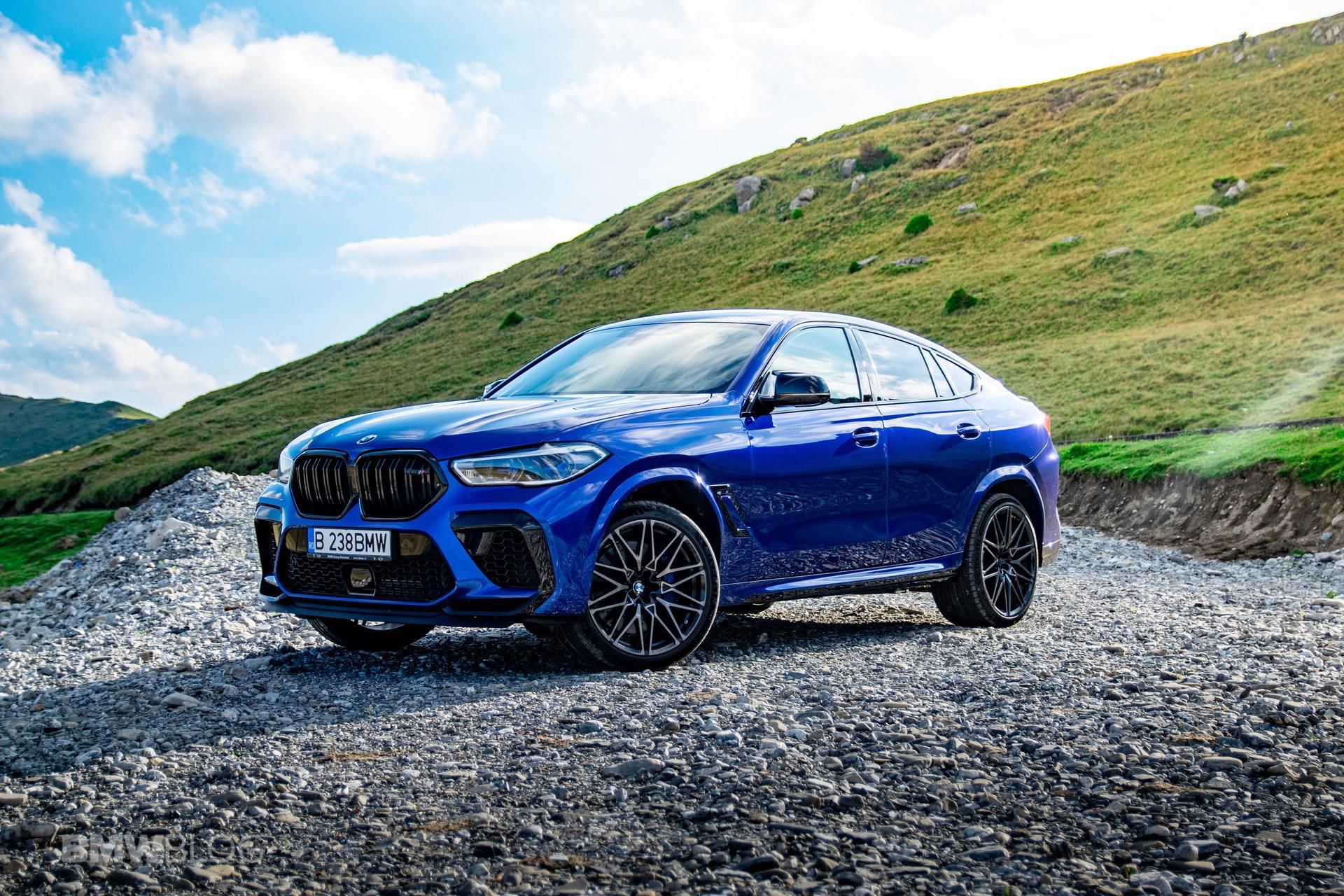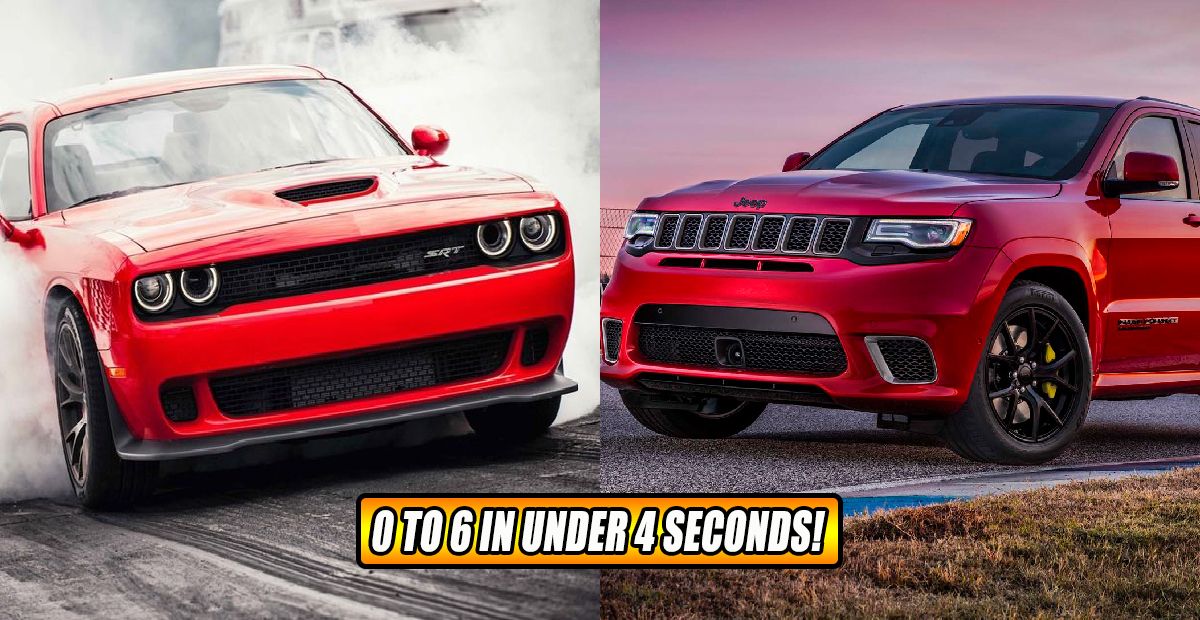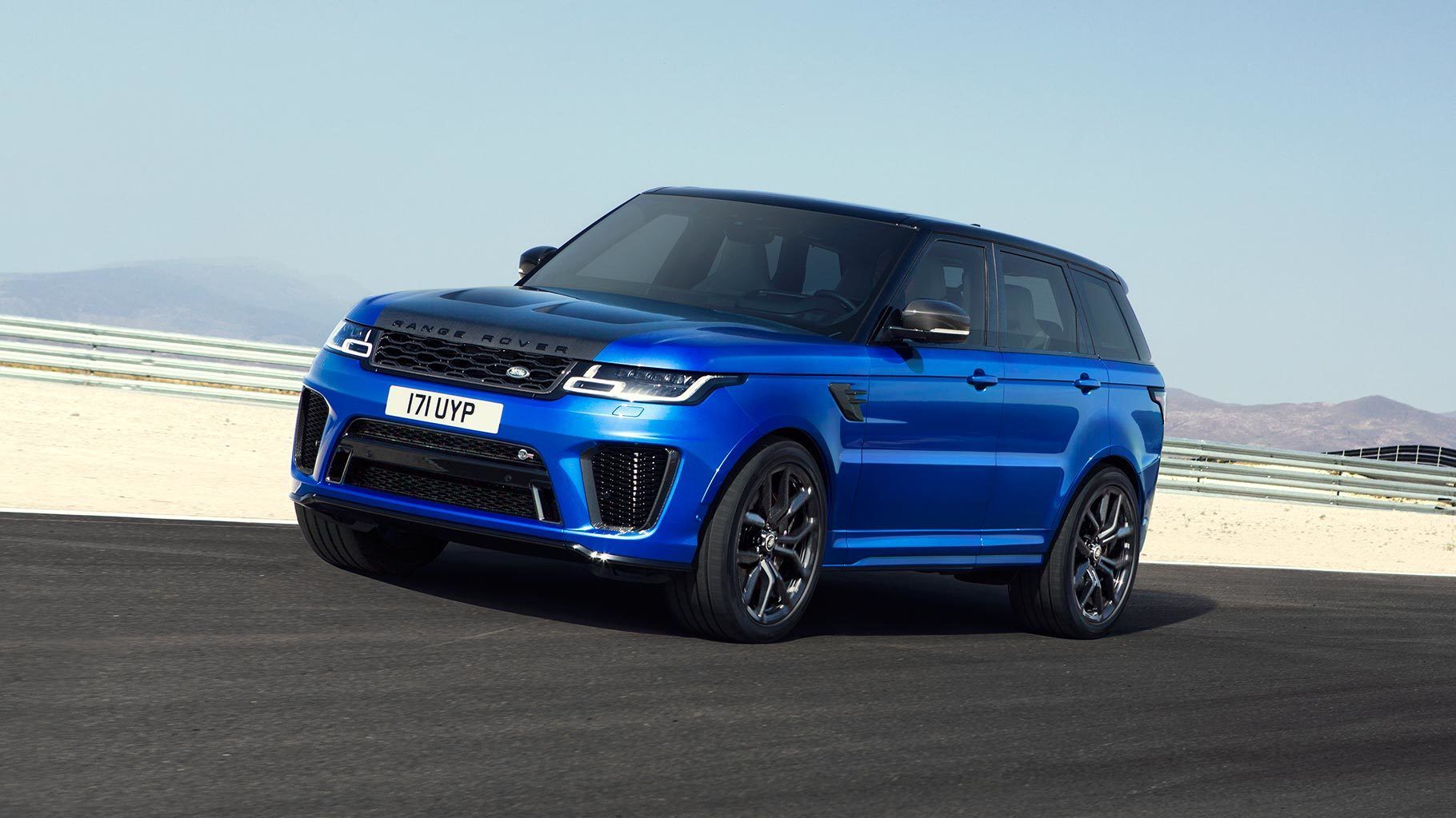Overview of 0-60 mph acceleration times for SUVs

SUV acceleration times vary significantly depending on factors like engine type, transmission, and vehicle weight. Understanding these differences is crucial for consumers choosing an SUV that meets their performance needs. This overview will detail the range of 0-60 mph acceleration times across various SUV categories, examining the key influencing factors and presenting comparative data.
Factors Influencing Acceleration Performance
Engine type, transmission, and overall vehicle weight play significant roles in an SUV’s acceleration capabilities. A powerful, high-torque engine can propel an SUV to 60 mph quickly. The transmission’s efficiency in transferring power from the engine to the wheels directly affects acceleration. Heavier SUVs, due to their increased mass, will typically have slower acceleration times compared to lighter models with the same engine and transmission.
0-60 mph Acceleration Time Ranges by SUV Category
The acceleration performance of SUVs varies greatly depending on the size and weight of the vehicle. Compact SUVs generally offer the quickest 0-60 mph times, followed by mid-size and full-size SUVs. This difference is often attributed to the inherent weight differences between the categories.
| SUV Category | Typical 0-60 mph Acceleration Time (seconds) |
|---|---|
| Compact | 7-10 seconds |
| Mid-size | 8-12 seconds |
| Full-size | 10-15 seconds |
Comparison of Engine Types within a Specific SUV Class
Within a particular SUV class, different engine types can significantly impact acceleration. Turbocharged engines often deliver more power and torque than naturally aspirated engines, leading to quicker 0-60 mph times. This is due to the turbocharger’s ability to force more air into the engine, enabling higher combustion pressures and output.
| Engine Type | Typical 0-60 mph Acceleration Time (seconds) (Mid-Size SUV Example) | Explanation |
|---|---|---|
| Turbocharged | 8-10 seconds | Turbochargers increase engine power, leading to quicker acceleration. |
| Naturally Aspirated | 9-12 seconds | Naturally aspirated engines rely on atmospheric pressure, resulting in less power and potentially slower acceleration. |
Performance Comparison Across SUV Models
SUVs, increasingly popular for their blend of practicality and performance, offer a diverse range of acceleration capabilities. Understanding how these performance characteristics vary across different models, trims, and even engine options is crucial for informed purchasing decisions. This section delves into the performance comparison of various popular SUV models, highlighting the fastest and slowest within specific categories and examining the correlation between acceleration times and engine specifications.
Performance Variations Across SUV Models
Acceleration times for SUVs exhibit significant variation, influenced by factors like engine type, horsepower, torque, and overall vehicle weight. Different trims of the same model year can show substantial performance disparities, underscoring the importance of considering specific trim levels when evaluating acceleration.
Fastest and Slowest SUVs in Specific Categories
Identifying the fastest and slowest SUVs within various categories, such as compact, mid-size, and full-size, provides valuable insight into the performance landscape. Factors like engine displacement, transmission type, and aerodynamic design all contribute to these performance distinctions. For instance, a compact SUV might prioritize efficiency over raw acceleration, while a full-size SUV might emphasize towing capacity.
Acceleration Time Variations Across Trims and Model Years
Acceleration times are not static. They can vary considerably across different trims and model years. Engine refinements, transmission upgrades, and weight reductions in newer models often lead to improved acceleration figures. This evolution is frequently seen in mid-cycle updates or significant model refreshes, where performance improvements are a primary consideration.
Calculating Average Acceleration Time for a Manufacturer
To calculate the average acceleration time for a specific manufacturer, collect the 0-60 mph acceleration times for all relevant SUV models. Sum these times and divide by the total number of models to obtain the average. This method, while straightforward, can be further refined by considering weighting factors based on the model’s popularity or market segment.
Correlation Between Acceleration Times and Engine Specifications
There’s a strong correlation between acceleration times and horsepower and torque outputs. Higher horsepower and torque generally translate to quicker 0-60 mph times. However, other factors, such as the vehicle’s weight and aerodynamics, also play a crucial role in determining acceleration performance. For example, a heavier SUV with a powerful engine might not achieve the same acceleration time as a lighter SUV with a similarly powerful engine.
Example SUV Acceleration Comparison
| Model | Engine Type | Horsepower | Torque | 0-60 mph (seconds) |
|---|---|---|---|---|
| SUV A | Turbocharged 4-cylinder | 250 | 300 lb-ft | 7.5 |
| SUV B | V6 | 300 | 250 lb-ft | 6.8 |
| SUV C | V8 | 400 | 450 lb-ft | 5.2 |
| SUV D | Hybrid | 280 | 350 lb-ft | 6.0 |
| SUV E | Turbocharged V6 | 350 | 400 lb-ft | 5.8 |
Note: Values are examples and may not reflect real-world data.
Factors Affecting SUV 0-60 Times

SUV acceleration performance, a crucial factor in consumer choice, is influenced by a multitude of intertwined factors. Beyond horsepower and torque, several critical elements determine how quickly an SUV reaches 60 mph. Understanding these elements allows for a deeper appreciation of the performance characteristics of different models.
Engine Displacement and Acceleration
Engine displacement, a measure of the engine’s volume, directly impacts the power generated. Larger displacement engines typically produce more torque and horsepower, leading to quicker acceleration. This is because a larger volume allows for a greater combustion process, resulting in more power output. For instance, a V8 engine with a larger displacement will often outperform a smaller-displacement four-cylinder engine in terms of acceleration. However, other factors, like transmission type and vehicle weight, also play significant roles.
Transmission Type and Gear Ratios
The transmission type and its gear ratios significantly affect acceleration. Automatic transmissions, while often more convenient, can introduce slight delays in power delivery compared to manual transmissions. Furthermore, gear ratios influence the torque multiplication at different speeds. Optimized gear ratios are crucial for maximizing acceleration by providing appropriate torque at each gear shift. A transmission with precise gear ratios and quick shifting mechanisms will contribute to faster acceleration times.
Vehicle Weight and Aerodynamics
Vehicle weight is a crucial factor in acceleration. Heavier SUVs require more power to overcome inertia and accelerate to 60 mph. Aerodynamics also play a role. A vehicle’s shape and air resistance significantly affect acceleration. A more aerodynamically efficient SUV will experience less air resistance, allowing for potentially faster acceleration, as less power is wasted overcoming drag. The combination of these factors directly influences the SUV’s overall performance.
Driving Modes and Acceleration
Different driving modes (e.g., sport, normal, eco) alter engine characteristics and transmission settings to optimize performance for various conditions. Sport mode often yields the most aggressive acceleration, maximizing engine output and minimizing transmission delays. Eco mode, conversely, prioritizes fuel efficiency, often sacrificing acceleration for lower fuel consumption. Understanding how these modes affect the vehicle’s performance is essential for achieving optimal acceleration in different situations.
All-Wheel Drive/Four-Wheel Drive Systems
All-wheel drive (AWD) or four-wheel drive (4WD) systems, while beneficial for traction in various conditions, can potentially impact acceleration. In some instances, the additional complexity of these systems can result in slightly reduced acceleration compared to a two-wheel-drive configuration. However, this impact varies depending on the specific implementation of the AWD/4WD system. For example, some AWD systems utilize a sophisticated electronic control system that effectively manages power distribution to optimize acceleration while maintaining traction.
Effect of Weight on 0-60 Acceleration
| Weight Class (estimated) | Estimated 0-60 mph Time (approximate) |
|---|---|
| Light (under 4000 lbs) | 5-7 seconds |
| Medium (4000-5000 lbs) | 7-9 seconds |
| Heavy (over 5000 lbs) | 9+ seconds |
This table provides a general guideline. Actual 0-60 mph times can vary considerably based on other factors like engine type, transmission, and driving conditions. These figures represent approximate ranges and are not precise measurements.
Trends and Future of SUV Acceleration

The SUV market is experiencing a dramatic shift, driven by a growing demand for enhanced performance and efficiency. This evolution is particularly evident in acceleration times, with manufacturers constantly striving to improve 0-60 mph figures. Understanding these trends and potential future advancements is crucial for consumers seeking the best possible driving experience.
Trends in SUV Acceleration Times (Past 10 Years)
Over the past decade, SUV acceleration times have consistently decreased. This improvement is a direct result of advancements in engine technology, including turbocharging, direct injection, and lighter materials in vehicle construction. Manufacturers are also prioritizing performance-oriented SUVs, leading to increased horsepower and torque outputs across the segment. The trend demonstrates a clear pursuit of faster acceleration within the SUV category.
Potential Advancements in Engine Technology
Engine technology is at the forefront of driving this acceleration evolution. Hybrid and electric powertrains are becoming increasingly prevalent in SUVs, offering the potential for instantaneous torque delivery and significant performance gains. Furthermore, advancements in internal combustion engines, such as the incorporation of advanced combustion systems and high-compression ratios, are expected to enhance acceleration figures in the near future. The increasing availability of high-performance, high-efficiency engines and powertrains is shaping the future of SUV acceleration.
Impact of Electrification on SUV Acceleration
Electrification is set to play a pivotal role in shaping future SUV acceleration. Electric motors offer instant torque, leading to markedly quicker 0-60 mph times compared to traditional combustion engines. Furthermore, the absence of a transmission in many electric powertrains contributes to reduced mechanical friction, resulting in even faster acceleration. Battery technology advancements are also expected to contribute to the performance gains seen in electric SUVs.
Innovative Technologies for Improved Acceleration
Several innovative technologies are emerging that could enhance SUV acceleration. Lightweight materials like carbon fiber composites, advanced aerodynamics, and sophisticated suspension systems contribute to improved acceleration figures. These technologies are becoming increasingly integrated into SUV designs, reflecting the rising importance of performance in the segment.
Projected 0-60 mph Times for Various SUV Types (Next 5 Years)
| SUV Type | Powertrain | Projected 0-60 mph Time (seconds) |
|---|---|---|
| Performance SUV | Electric | 3.5-4.5 |
| Performance SUV | Hybrid | 4.5-5.5 |
| Mid-Size SUV | Electric | 5.5-6.5 |
| Mid-Size SUV | Hybrid | 6.5-7.5 |
| Compact SUV | Electric | 6.5-7.5 |
| Compact SUV | Hybrid | 7.5-8.5 |
| Luxury SUV | Electric | 3.0-4.0 |
| Luxury SUV | Hybrid | 4.0-5.0 |
Note: Projected times are estimates based on current technological advancements and market trends. Actual times may vary depending on specific vehicle models and manufacturing processes.
Consumer Perspective and Impact
For consumers, the 0-60 mph acceleration time of an SUV is a crucial factor influencing their purchasing decision. It directly impacts their perception of the vehicle’s performance, prestige, and overall driving experience. This crucial metric goes beyond simply being fast; it speaks to the vehicle’s capability and the driver’s perceived control. Consumers often subconsciously associate quicker acceleration times with a more desirable and powerful vehicle, even if the practical difference is negligible in everyday driving.
The perceived value of acceleration in SUVs is multifaceted. While practical considerations like fuel efficiency and cargo space are important, the exhilarating feeling of quick acceleration resonates with many drivers, particularly those who enjoy spirited driving. The perceived performance and handling capability tied to quick acceleration contribute significantly to the overall driving experience. This experience extends beyond the initial acceleration phase; a smooth and responsive powertrain throughout the entire speed range is often appreciated by drivers.
Importance of 0-60 mph Acceleration to Consumers
Quick acceleration times often equate to a more exhilarating and engaging driving experience. Consumers value the feeling of control and responsiveness that a rapid acceleration provides, even if the practical application is limited. This perceived power translates to a higher perceived value of the vehicle, impacting both initial purchase decisions and long-term satisfaction.
Consumer Perception and Valuation of Acceleration Performance
Consumers frequently perceive SUVs with quicker 0-60 times as more powerful, capable, and desirable. This perception is rooted in the association of speed with prestige and performance. The desire for a fast-accelerating SUV often stems from a desire for a vehicle that can handle various driving scenarios and project an image of capability. Market research shows a correlation between perceived performance and higher purchase prices.
Impact of Acceleration Time on Driving Experience
Acceleration time directly affects the overall driving experience. A quick 0-60 time enhances the feeling of responsiveness and control, making the vehicle feel more agile and powerful. This responsiveness translates into a more satisfying and engaging driving experience, contributing to the overall enjoyment of the vehicle. Drivers appreciate the ability to quickly navigate traffic or merge onto highways with confidence.
Effect of 0-60 Times on Resale Value
Vehicles with faster 0-60 times tend to hold their resale value better than those with slower acceleration. This is because the perceived performance and desirability of the vehicle are often directly linked to its acceleration. Potential buyers are often willing to pay a premium for a vehicle with a proven track record of performance. The perceived value of a quick 0-60 time often outweighs minor differences in features or amenities.
Effect of 0-60 Times on Perception of Prestige
A vehicle with a quick 0-60 time can enhance its perceived prestige. This perception is linked to the vehicle’s image of performance and capability. Quick acceleration is often associated with luxury and high-end vehicles, and this association carries over to the perception of the SUV’s overall prestige.
Average Customer Ratings of SUVs with Similar Acceleration Times
| SUV Model | Average 0-60 Time (seconds) | Average Customer Rating (1-5 stars) |
|---|---|---|
| Model A | 5.5 | 4.2 |
| Model B | 6.2 | 3.8 |
| Model C | 7.0 | 3.5 |
Note: These are hypothetical data for illustrative purposes only. Actual data would be derived from extensive market research and consumer surveys. Ratings are based on a combination of acceleration, handling, and overall driving experience.